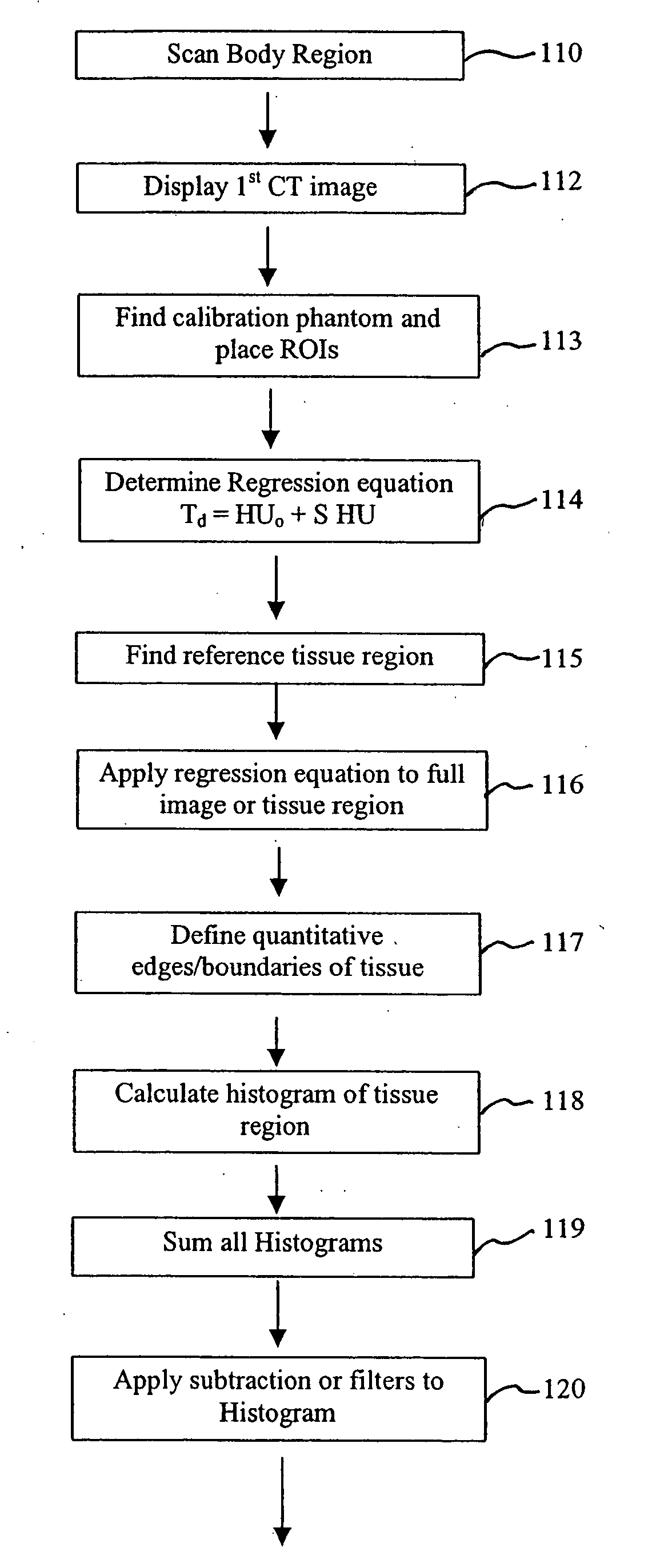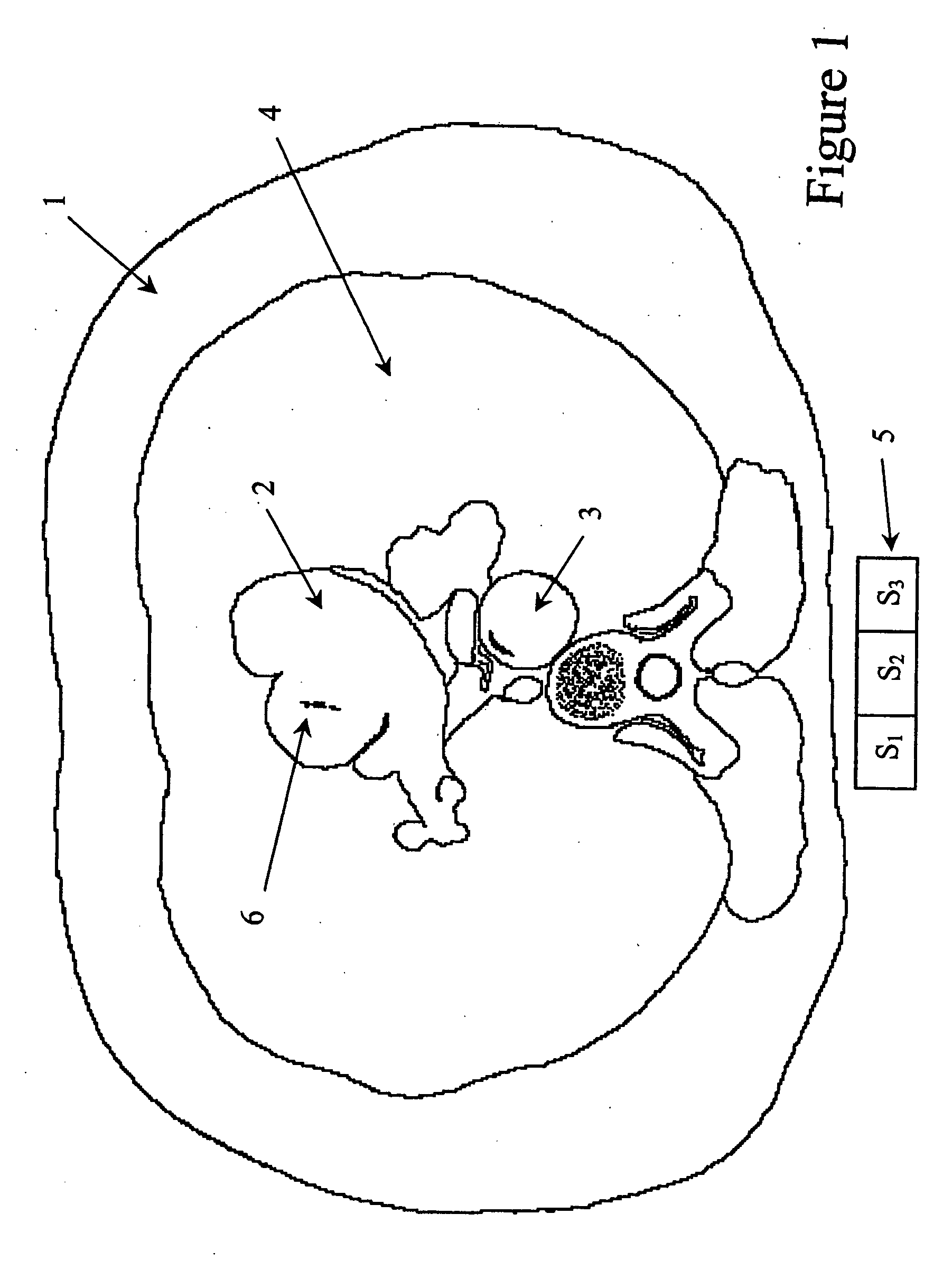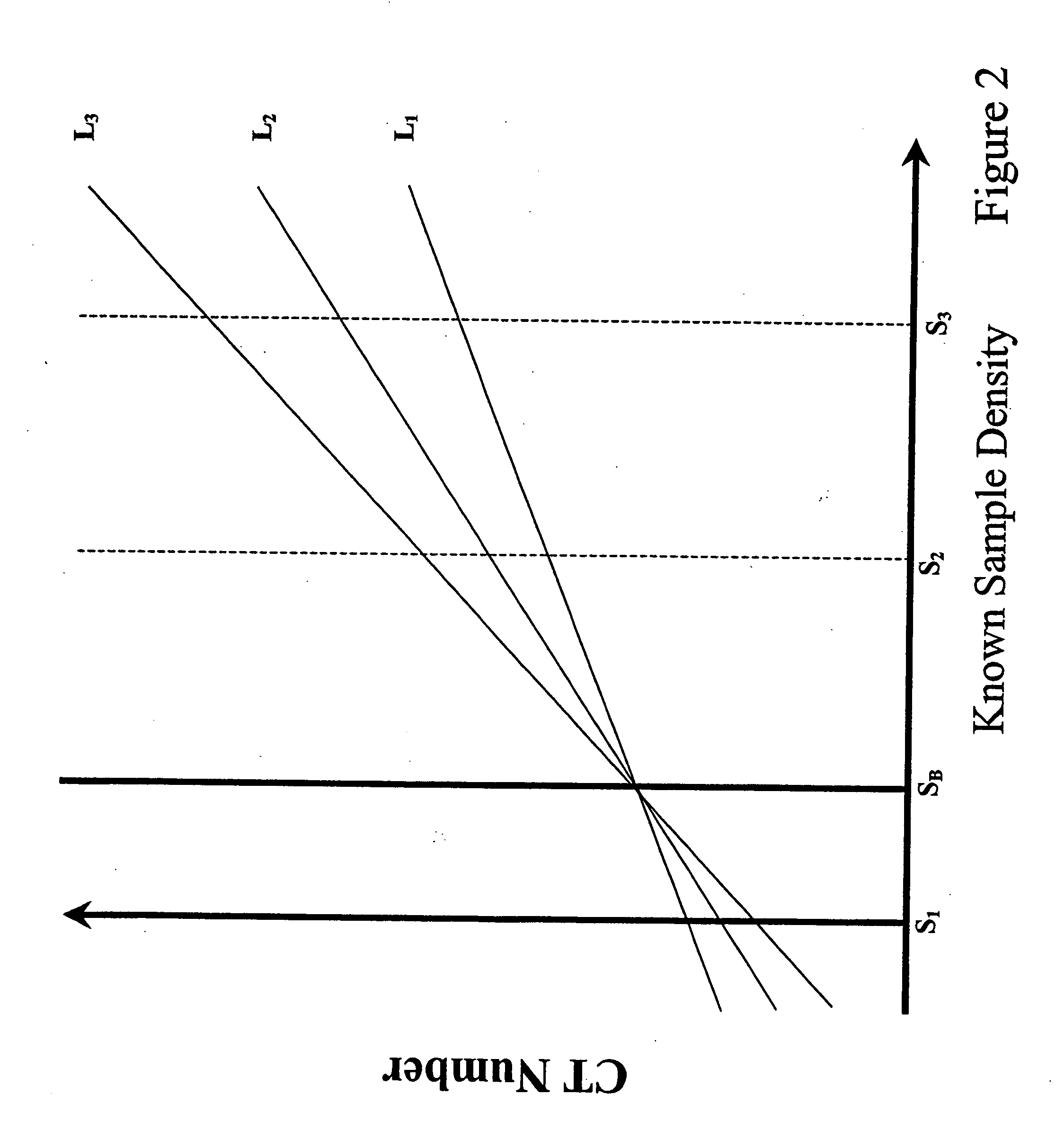Calibration of tissue densities in computerized tomography
a computerized tomography and tissue density technology, applied in the field of medical imaging using computerized tomography, can solve the problems of difficult reproducibility and more difficult measurement, and achieve the effect of reducing operator time, accurate and reproducible results, and being easy to apply
- Summary
- Abstract
- Description
- Claims
- Application Information
AI Technical Summary
Benefits of technology
Problems solved by technology
Method used
Image
Examples
Embodiment Construction
[0038] A preferred embodiment of the present invention is described below in connection with the flow chart of FIGS. 6A and 6B in view of the illustrations in FIGS. 1-5.
[0039] As illustrated by a step 110 in FIG. 6A, a CT scan of the subject is first taken with the subject lying on the reference calibration phantom. Several CT images are taken in a short time period. Preferably, CT images are taken using a multi-slice spiral scan CT scanner or using the EBCT Imatron scanner, although any CT scanner can be used for many tissues. Scans of the heart for coronary calcium analysis will require fast scan times to stop the motion of the beating heart.
[0040] After reconstruction of the CT images in the scanner computer, a first cross-sectional image of the subject is displayed in a step 112 in FIG. 6A. FIG. 1 illustrates a representative depiction of such an image taken through the heart showing coronary calcium 6. The heart tissue 2, the aorta 3, the lung 4, the chest wall and a referenc...
PUM
 Login to View More
Login to View More Abstract
Description
Claims
Application Information
 Login to View More
Login to View More - R&D
- Intellectual Property
- Life Sciences
- Materials
- Tech Scout
- Unparalleled Data Quality
- Higher Quality Content
- 60% Fewer Hallucinations
Browse by: Latest US Patents, China's latest patents, Technical Efficacy Thesaurus, Application Domain, Technology Topic, Popular Technical Reports.
© 2025 PatSnap. All rights reserved.Legal|Privacy policy|Modern Slavery Act Transparency Statement|Sitemap|About US| Contact US: help@patsnap.com



